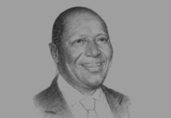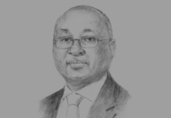What sort of participation in the economy is expected from the private sector?
Côte d'Ivoire Economy
Interviews & Viewpoints | Prime Minister Daniel Kablan Duncan: Interview from The Report: Cote d'Ivoire 2015
Articles & Analysis | Casting a wider net: The country is aiming to diversify its economy and its trade partners from The Report: Cote d'Ivoire 2015
An open economy with trade accounting for 91% of GDP in 2013, Côte d’Ivoire has traditionally held a central position in regional trade. The heavyweight of the West African Economic and Monetary Union (Union Economique et Monétaire Ouest-Africaine, UEMOA) with 35% of regional GDP, the country lost some of its stature over the decade of unrest....
Articles & Analysis | Fiscal drivers: The authorities are making considerable efforts to stabilise spending and reassure potential lenders from The Report: Cote d'Ivoire 2015
The National Development Plan (NDP) boosted public investment from 3% of GDP in 2011 to 9.7% by 2015, but headline spending is not the only notable aspect of Côte d’Ivoire’s fiscal policy. With donor support the authorities have also made headway on improving execution of spending and shifting funds to capital projects – even if recurrent...
Articles & Analysis | Open for business: Efforts to improve the country’s pull for investors are bearing fruit from The Report: Cote d'Ivoire 2015
While Côte d’Ivoire has a natural advantage in the West African Economic and Monetary Union (Union Economique et Monétaire Ouest-Africaine, UEMOA), with the region’s largest market and most developed infrastructure, authorities are striving to improve the country’s soft infrastructure to improve rankings in international investment climate...
Articles & Analysis | Rapid rebound: Recovery is well under way following years of uncertainty from The Report: Cote d'Ivoire 2015
A heavyweight within the West African Economic and Monetary Union (Union Economique et Monétaire Ouest-Africaine, UEMOA), accounting for 35% of the eight-member region’s GDP, Côte d’Ivoire’s growth is a bellwether for Francophone West Africa. Driven by rising public spending and public-private partnerships (PPPs) in infrastructure projects,...
Interviews & Viewpoints | Donald Kaberuka, President, African Development Bank: Interview from The Report: Cote d'Ivoire 2015
What challenges do sub-Saharan African (sSA) governments face in terms of financial management?

